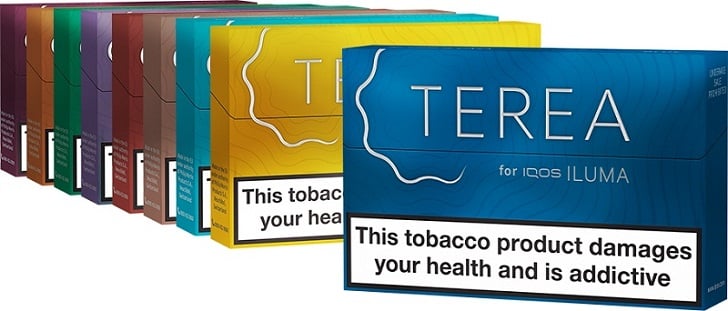
As Heat not Burn products become more popular they’re steadily generating debate among the public, health activists and scientists. So far, the medical profession want to know how much safer heated tobacco products are than traditional tobacco products. Activists want to know if they’re part of a cunning plot to create more smokers. Smokers want to know how good they taste. This already seems like quite a lot to discuss – but it turns out some people are already thinking a lot further. People are interested in what effects heat not burn might have.
A few days ago Heat Not Burn UK had the opportunity to interview David O’Reilly, the director of science, research and development at British American Tobacco. David is a real expert on HnB and I had a fascinating discussion with him (so expect to see his name a few times on this blog over the next month or so), and he’s been thinking way ahead of just about everyone else I’ve spoken to.
This Is The Future
One thing David was very clear on is that BAT, like Philip Morris, see non-combustible products as the future. While I was talking to him I noticed that he mentioned, more than once, moving to HnB. Eventually I asked him if he saw it as expanding their product range or repositioning it. “Our customers are moving to safer products,” he said. “We can move with them, or go out of business.” So BAT definitely seem committed to technological change.
What I hadn’t thought about was how far-reaching these changes could be. One of the products we talked about was Glo, BAT’s heated tobacco product. Glo uses “Neostiks”, similar to the Heets that feed PMI’s iQOS, and as you probably know there really isn’t a lot of tobacco in these. David explained just how inefficient a traditional cigarette is; about 90% of the tobacco in it ends up either in the filter or escaping as sidestream smoke; only about 10% of it is actually inhaled.
With a Glo this inefficiency just doesn’t exist. A Neostik has a filter but, like the one on a Heet, it’s mostly just there to give a familiar cigarette-like fee; it’s small and permeable enough that it traps very little of the vapour. Meanwhile there’s no sidestream problem either. In fact once a Glo is powered up and at working temperature it’s generating vapour constantly, but this stays in the heating chamber until you take a puff and inhale it – it doesn’t escape.
The end result is that a Neostik contains about 10% as much tobacco as a traditional cigarette, but it’s pretty much equivalent to it; if you smoke a pack of twenty every day, you’ll probably get through a pack of twenty Neostiks when you switch to Glo – but that’s as much tobacco as just two cigarettes.
Consequences?
I have to admit, I was sitting there making admiring noises about this efficiency when David said, “Of course, we have to think about what effect that will have on the tobacco farmers.”
Well, of course we do. After all, tens of thousands of people rely on tobacco farming for their livelihood. Many of them are in poor countries, too. A 90% fall in tobacco production could have a devastating effect on their economies. Tobacco controllers sometimes argue that tobacco takes up farmland that could be used for food, but the truth is the world isn’t short of food. When famines happen, which is a lot less often than they used to, it’s generally because there’s no way to get the food to the people who need it. Cutting tobacco production by 90% isn’t going to solve world hunger, but it could make a lot of people unemployed.
Then again it might not. The truth is, right now we simply don’t know. Will tobacco production fall significantly in the first place? We don’t know. A lot of it depends on what sort of reduced-risk products smokers actually move to. If they all switched to Glo then yes, a lot less tobacco would be needed. But so far the most popular alternatives are snus and e-cigarettes. Snus is made of tobacco, and e-cigs need nicotine – which is extracted from tobacco.
The most likely outcome is that there will continue to be a range of products, including snus, dissolvables and e-cigs as well as Heat not Burn devices. Total demand for tobacco will probably fall, but not dramatically at first. From the point of view of the farmers that’s likely to be good news. If demand changes gradually they can adjust and cope with it; it’s a sudden shock that would cause mass poverty.
What matters is that people are thinking about issues like this – and they are. Ironically it’s the tobacco industry, usually painted as the villain of the piece, who’s looking into the possible future effects of heat not burn and other harm reduction products. Public health tend to just dismiss the fate of tobacco farmers, airily assuming that they can all start growing organic quinoa instead. Unfortunately life is rarely that simple.
Upping Their Game
The tobacco industry has a bad reputation, and leaked documents from the 1960s and 70s show that, a few decades ago at least, it was far from undeserved. They do also deserve some credit, though. BAT’s research facility in Southampton has been trying to develop a safer cigarette for decades; now they’ve abandoned that apparently hopeless quest and moved on to alternative products instead. They might have been late to the game on HnB and e-cigs, but they’re putting a lot of time and resources into it now.
In the last ten weeks I’ve spoken to researchers and senior executives from two of the world’s largest tobacco companies, and the impression I get is that they’re very serious about harm reduction and the effects of heated tobacco. It’s unrealistic to expect them to stop selling cigarettes tomorrow, but they seem very determined to stop selling them at some point in the not too distant future. Another thing David O’Reilly, his colleagues from BAT and their opposite numbers at PMI all stressed to me is that products like Glo, iFuse and iQOS are early iterations of the technology. Some very clever people with very large research budgets are already working on improved versions that are simpler to use and give even better performance. The future for Heat not Burn, and every other category of reduced-risk tobacco product too, is looking very exciting.












I wonder – would tobacco companies consider growing their own tobacco (in-house) with that ten percent figure…